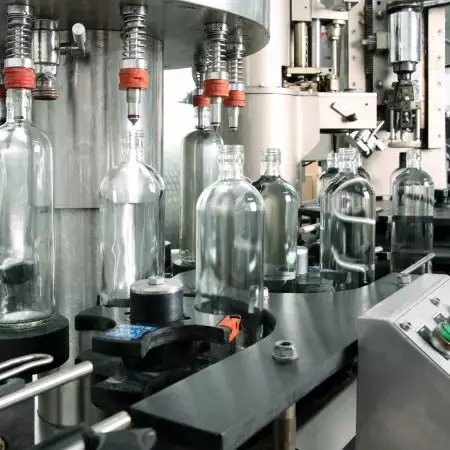The need to increase competitiveness and profitability in the production process has never been more pressing.
Manufacturers are realising their need to acquire the ability to leverage digital technologies and data in order to respond more effectively and precisely to their customers’ explicit and latent needs. For their part, customers are increasingly looking for solutions, and prefer to buy results rather than products.
This leads manufacturing companies to shift from focussing on the product to establishing relationships where results are sold rather than features, and services rather than products.
This transformation process is known as servitisation and is a change of business model that requires fundamental changes in the manufacturer’s organisational structures.
The supplier of a “product-service” assumes an integral role in their customer’s operations, offering them the possibility to focus more on their core business.
As a result, compared to the offer of the product alone, servitisation requires the manufacturer to have a deeper knowledge of its customers and the market scenario in which they operate, a greater level of customisation and a contextual adaptation of the solutions to the preferences and needs of the customer.
In addition, in a servitisation scenario, manufacturers tend to have results-based contracts with their customers that commit them to comply with stringent service availability conditions and incur penalties for non-compliance.
It therefore becomes necessary to provide technologies for monitoring and analysing the data associated with the service components in order to supervise performance, foresee and plan maintenance, and preventively identify unforeseen events and failures before they can lead to an interruption of the service.
The importance of logistics is growing
In this transformation from products to services, in a market already accustomed to the time frames of the big e-commerce players, logistics plays a fundamental role. Being able to guarantee deliveries and services in the shortest possible time has become even more essential. The logistics infrastructure must therefore be responsive and reliable.
In scenarios involving, for example, the periodic replacement of equipment, the supply of consumable materials (such as print cartridges) or of replacement parts with preventive maintenance services, ensuring correct and timely delivery is an essential element that requires close interaction between the manufacturer and the logistics operator.
Servitisation also opens the door to reverse logistics where the traditional supply chain is enhanced with additional services through which the manufacturer manages the return of the product for possible reuse, revaluation or recycling, in a closed-cycle circular economy that favours the environment, competitive advantage, regulatory compliance and social responsibility.
In this context, logistics stops being simply a business support and becomes an integral part of the business itself.
New opportunities require new technologies
Servitisation redefines and extends the value chain by creating a network in which raw material suppliers, producers, logistics operators, retailers and customers all contribute to building added value from which everyone can benefit.
For this reason, servitisation is an opportunity for both the manufacturer and the logistics operator, in a context of close partnership where the business results of each of them are inextricably linked.
For logistics operators in particular, acquiring an integral role in the business opens up opportunities to build longer-term customer relationships and generate higher and additional profits. Many aspects are open to innovation: for example, improvement in demand forecasting and inventory management (particularly for the parts distribution network), redefinition of the supply chain (including the after-sales component) and the coordination of customer operations with workshops, service centres and field technicians.
However, to succeed in these objectives, logistics operators need to take a step forward that requires the adoption of new technological tools: analytics, forecasting models based on artificial intelligence and digitalisation. At the level of information systems, digitisation technologies supported by analytics tools help to improve the tracking of goods throughout the entire supply chain and keep attention focussed on the service market and competing offers, as well as providing constant service performance measurement.
Forecasting models can be applied to anticipate market demand and plan delivery volumes, as well as to predict areas of demand and optimise the organisation of deliveries. Artificial intelligence tools allow the development of optimisation algorithms to improve the routes and distribution of delivery vehicles throughout the region and benefit the production chain.
In the case of warehouse management, for example, it allows managers to:
- estimate the demand over time for all items in stock, improving their management, through a predictive model that includes not only historical data but also data on the boundary conditions;
- receive suggestions on the optimal stock level, automatically calculated in thousands of SKUs (Stock Keeping Units), through demand prediction models;
- dynamically order the correct quantity of raw materials needed to meet production orders, reducing waste and increasing profits.
However, technology alone is not enough. Analytical, mathematical and development skills are also needed, and the quickest and most efficient way to obtain them is to look for them outside the company.
In summary, to take advantage of new opportunities, logistics service providers need to recognise the change in their manufacturing customers and thus change their business model, acquiring a greater capacity to manage information, plan, control the flow of goods and measure performance through the use of innovative technological tools.
3Morph the Moxoff solution for the optimisation of 3D printing
Moxoff has developed 3morph, an innovative software solution for calculating and generating the machine code required to execute a print (“GCode”), which optimises the quality of the object produced while minimising time and costs.
Thanks to the skills of the Moxoff specialists, the 3morph technology exploits shape optimisation, slicing, support construction and path minimisation techniques to generate an optimised G-Code that ensures high quality 3D prints with minimal times and material quantities. The STL (3D model) repair methodology, the shape optimisation and support construction methods and printer robotics calibration can be integrated into any 3D-printing technology.
Contact us for more information




